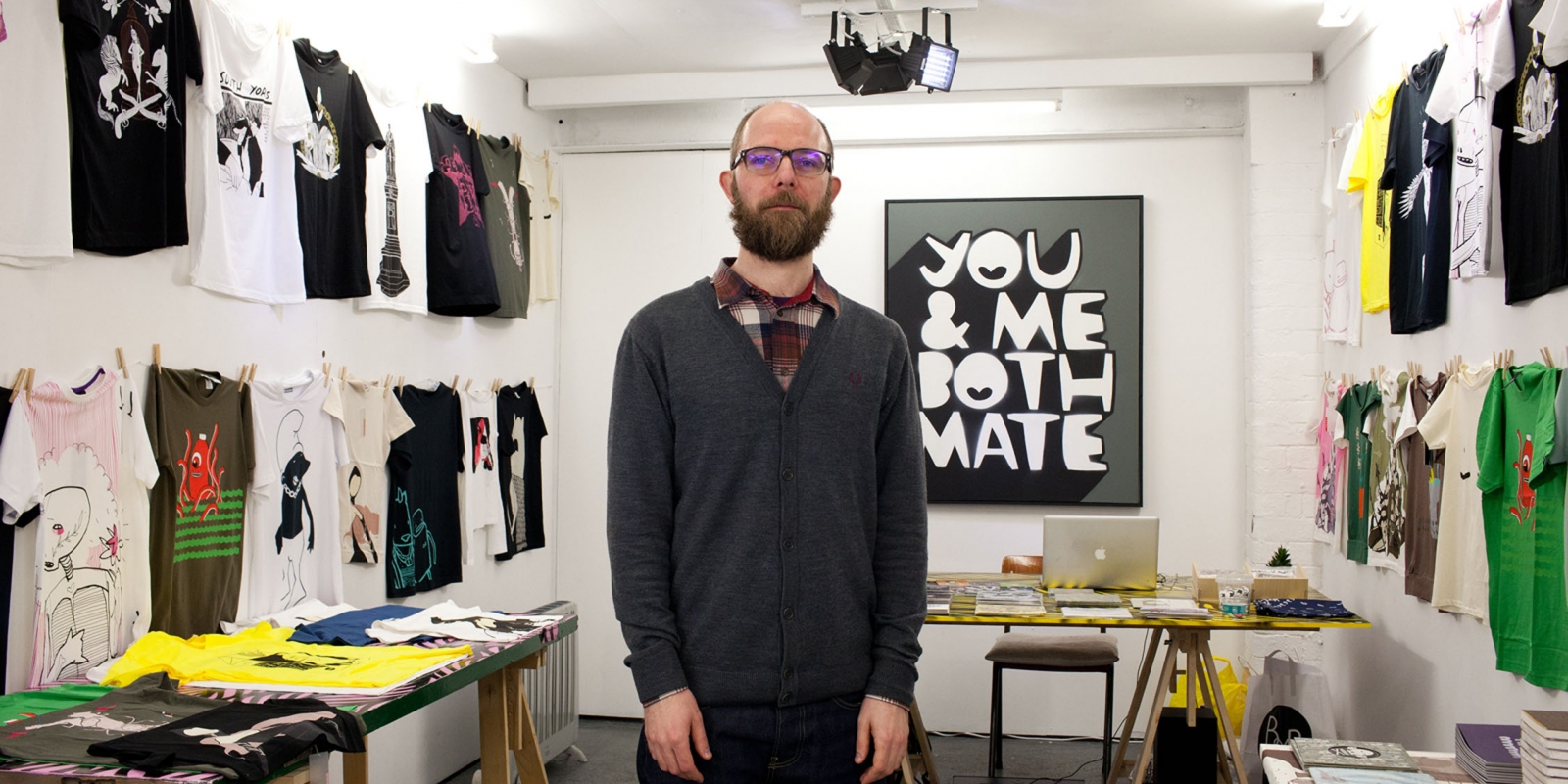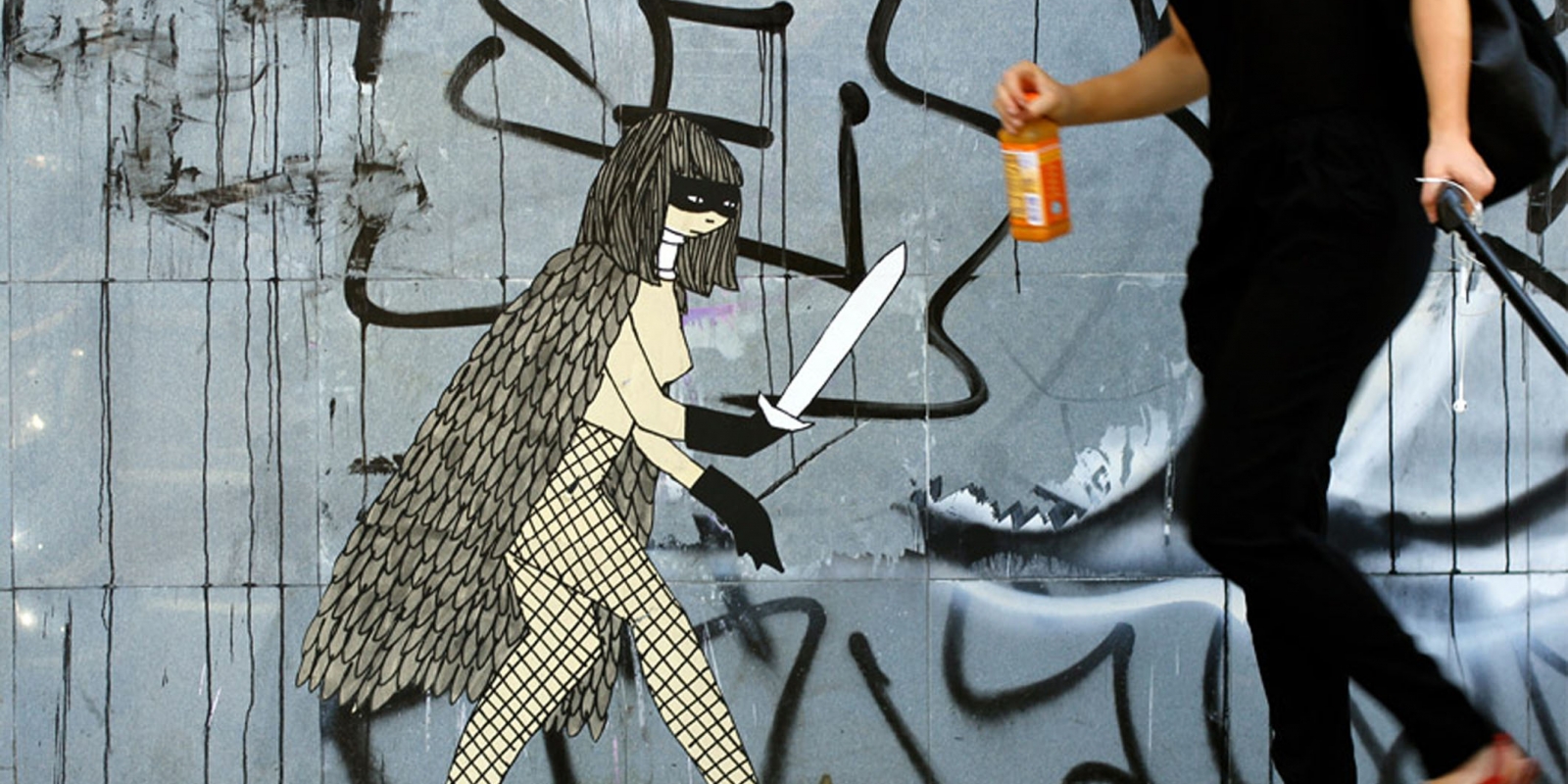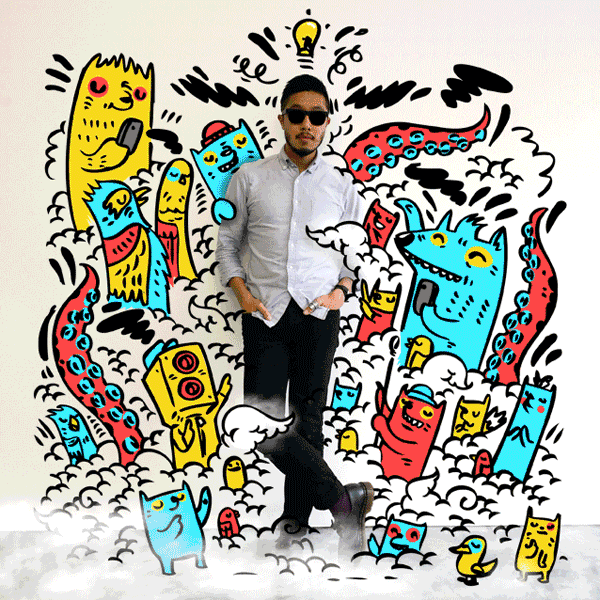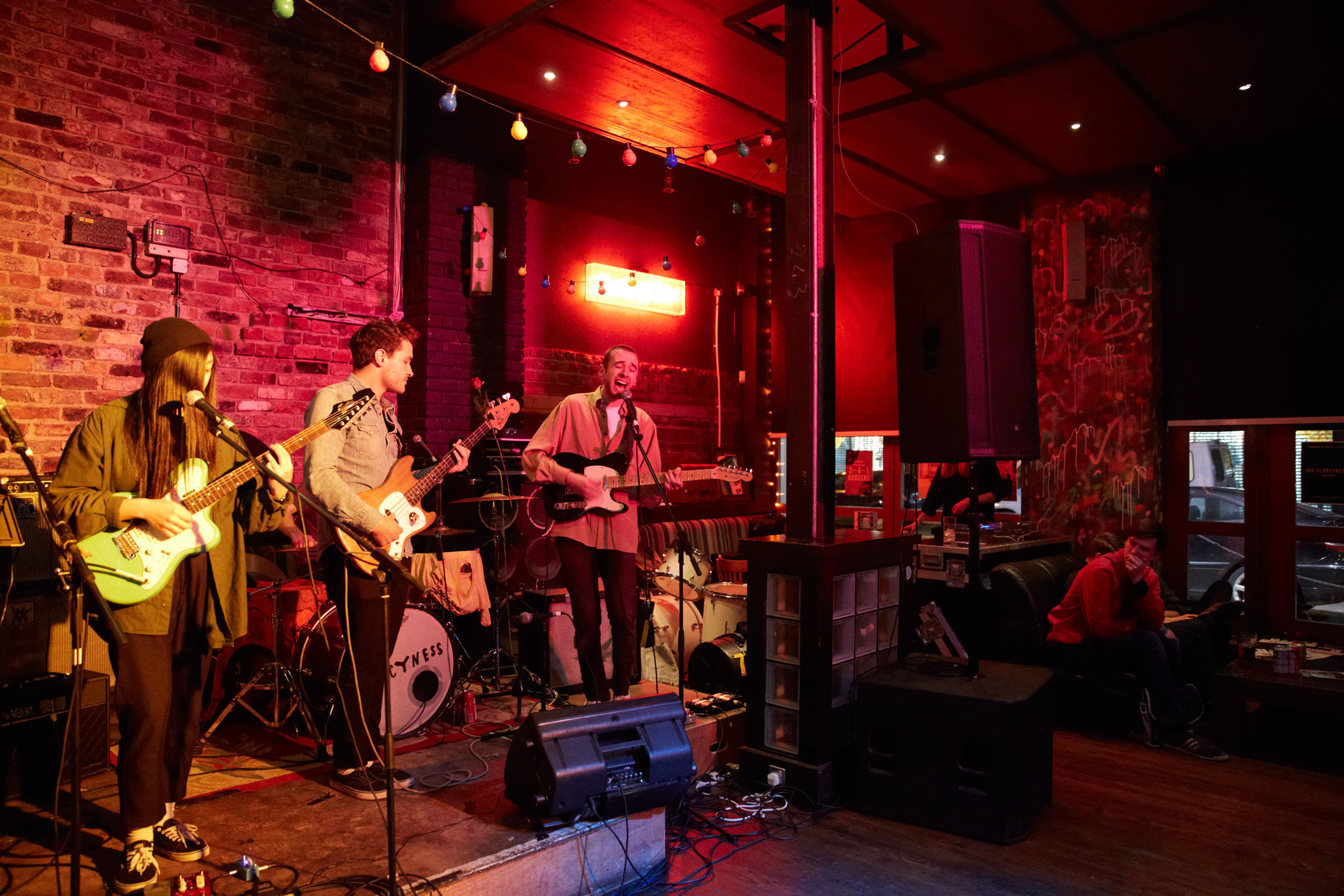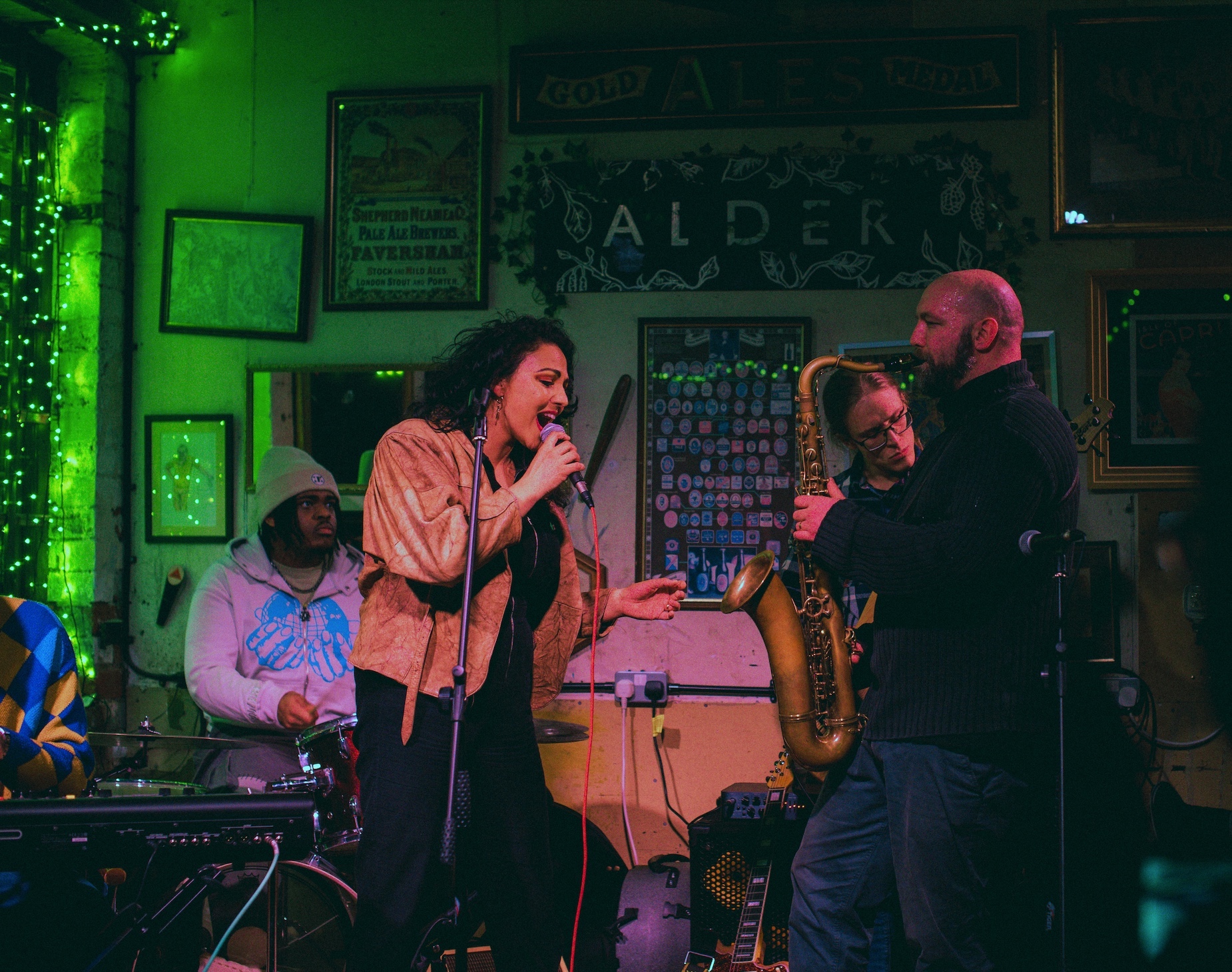To different people Kid Acne means different things: street artist, printmaker, musician, illustrator. Where did it all begin?
It was in the street, although my first exhibition was around the same time. When I was 16 I exhibited work, printmaking and collages, in a group show at the Custard Factory in Birmingham. The four elements have always run alongside each other. In the last five years I've tried to concentrate on one thing at a time, even if it’s just for six months or a year, because you feel like a Jack of all trades if you're not focussed.
Is getting out in the street and painting still a big part of what you do?
Painting murals is the most enjoyable and most liberating out of everything – seeing what you can achieve in a certain amount of time, with a certain amount of materials, on a certain scale. Once it's done, you walk away from it and that's it. Making art for galleries, there's always the thing in the back of your mind: who are you making it for and how much is it worth and where would they put it in their house. In the street, you just do it for the sake of doing it.
It’s always exciting to see a new Stabby Women scene crops up in Sheffield. What’s their backstory?
I started painting them in the street in 2003. Originally it was just to do something that I felt was not represented in graffiti at the time, and that was painting strong female characters as opposed to just decorative, sexy women. I grew up in a single-parent family with a strong mother, I was born in Africa – so we had sort of souvenirs of tribal art – and I've always been into fantasy and mythical stuff. All that merged together and I started painting these female warriors. There are elements of Norse mythology mixed with other things from South America and Africa; I've done a siren and a sphinx; there's one based on Glycon, this religious figure that Alan Moore's into that’s like a snake puppet; there’s a steampunk one based on Commander Makara from Star Fleet, an 80s puppet animation. I've taken icons and symbols from past civilisations and different cultures very liberally and tried to create this belief system so they've got some kind of heritage. But ultimately the Stabby Women were me trying to present an alternative to the very misogynist characters you'd see in graffiti.
Some of your most recognisable t-shirts and murals play with South Yorks and local dialect. Why do you think so many people respond to these designs?
In a gallery people can be quite reserved and polite about their opinions, but when you paint in the street people are very vocal about what they think of your work. There are a few things people said, backhanded compliments, that I thought were really funny, and I wanted to paint them big to over-emphasise them. I got bored of painting characters so I did some typography, and one of the first was on Psalter Lane [Art College]: “You'll miss me when I'm gone”. That was just before it got knocked down, so it was kind of poignant. When you're doing graffiti you only really do your name, but when you write something else it's a lot more inclusive and conversational for those who see it. So it was an excuse to create big lettering without the ego of the graffiti artist. With the South Yorks ones, it's nice to have a few elements of civic pride every once in a while. The “I heart NY” t-shirts were made to instil a bit of civic pride because it was murder capital of the world at that point, there was lots of poverty – but now you just think it's cool. You can't really compare Sheffield to New York, but it's good in the face of adversity to just go “yup, this is Sheffield”.
What do you love about Sheffield?
It's easygoing. I like the fact that it's hilly, so wherever you are in the city you've got an amazing sense of perspective, of your surroundings. There's a lot of opportunity still here to make things happen for yourself, there's quite a DIY culture. In that sense, everything's up for grab – it's not already been gentrified, you're not priced out of the neighbourhood. I think it can be quite an aspirational place in that respect, but there's more to happen.
What would you do to improve the city?
It's generally the individuals with the vision and the passion that make the city vibrant and exciting. The more diversity, the more going on – it's good for everybody. It's a shame that Meadowhall took the life out of the city centre; if I was to do anything drastic it would be to try and get the city centre up and running like it should be. It's not a town; there should be a lot more happening. The centre is a bit of an odd one, but at the same time what's happening in neighbourhoods like this, and Abbeydale Road, Ecclesall Road, Kelham Island, is little things are popping up. Sheffield’s definitely unique.



